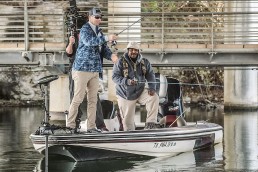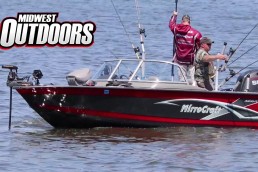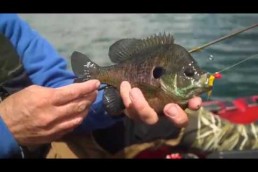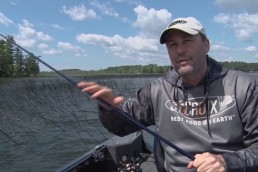The Beauty of Street Fishing
SHARE THIS POST
Every time I walk down the streets of a city wearing my backpack and carrying a fishing rod, it generates interest. Where could this guy be going with a fishing rod?
Fishing, of course! We call it street fishing, and it’s been exciting for me to reach new people with the message through my Nat Geo WILD show, Fish My City with Mike Iaconelli. Looking for fishing spots within the city limits is what my friends and I grew up doing, in Philadelphia.
As we flip the calendar into 2019, I hope you will join the street-fishing ranks so you can see how much fun and adventure await.
Why urban fishing?
Why would you want to go fishing in an urban setting? First off, city fishing is beautiful. It’s different from a natural setting and yet it’s the same. Yes, one is manmade, and you might be surrounded by lots of people and noise and activity, so in that sense it’s different fishing in an urban environment compared to a traditional lake. But it’s also the same in that it’s fishing––fish are the same whether in the city or on a pristine glacial lake. They behave the same; they have the same instincts.
You’re on the water and surrounded by beauty. You can be out fishing while looking at a beautiful cityscape. It’s different from a landscape or a seascape, but to me it’s just as beautiful––just different scenery.
When we were filming the first season of Fish My City, we were surrounded by people out walking, or taking boat rides, or skateboarding. Fishing was––and should be––part of what people do in a big city.
Also, for those who live in or near the city, it’s convenient. City waters are close to most of the population, so you can leave your home and in less than an hour––maybe even a few minutes––catch your first fish. It’s also inexpensive. You don’t need a boat––don’t need to buy it, store it, maintain it, tow it, buy gas for it. Shore fishing does not require a heavy investment in equipment.
But, if you would like a boat that would allow you to reach spots inaccessible to shore fishermen, you can use a kayak. There are lots of new models designed for fishing that you can launch at the water’s edge, whether there’s a ramp or not.
Are you enjoying this post?
You can be among the first to get the latest info on where to go, what to use and how to use it!
How city fishing was built
In many instances, the structures and cover holding fish in the city were built by human hands. Most cities came to be because waterways connected one location to others. The Industrial Revolution of the 18th and 19th centuries played a big role, because trade and commerce were largely facilitated by, and conducted around, waters. Cities naturally sprang up in those areas.
Over the years, as cities developed, local waterways were improved for the purposes of business and transportation. Manmade structures were created out of concrete and steel: bridges, canals, rock piles, discharges, break-walls, etc. These structures created urban habitat for fish. And though at one time many big-city waterways were polluted, it was, ironically, technology that improved that problem. For example, in Chicago, engineers figured out a way to reverse the flow of the Chicago River, which allowed the river to clean itself.
During the middle of the last century, through great conservation efforts, places that had become too polluted to offer good fishing were cleaned up. I think of Cleveland, Detroit, Chicago, Milwaukee, the Delaware River, and other ports of the Great Lakes.
Then, over the past 30 years, nature itself provided additional cleansing with zebra mussels and gobies, which were inadvertently introduced to the Great Lakes from overseas by ballast tanks from ships and barges. These foreign species have acted as filters and have cleaned the water to crystal clear in some areas.
Beauty might be in the eye of the beholder, but a fish pulling back on your line is a beautiful thing no matter where you are. If you haven’t tried street fishing, it’s high time you joined me in the concrete jungle.
For more information…
For details on Fish My City with Mike Iaconelli on Nat Geo WILD: bit.ly FishMyCity.
MWO
SHARE THIS POST
Did you enjoy this post?
You can be among the first to get the latest info on where to go, what to use and how to use it!



